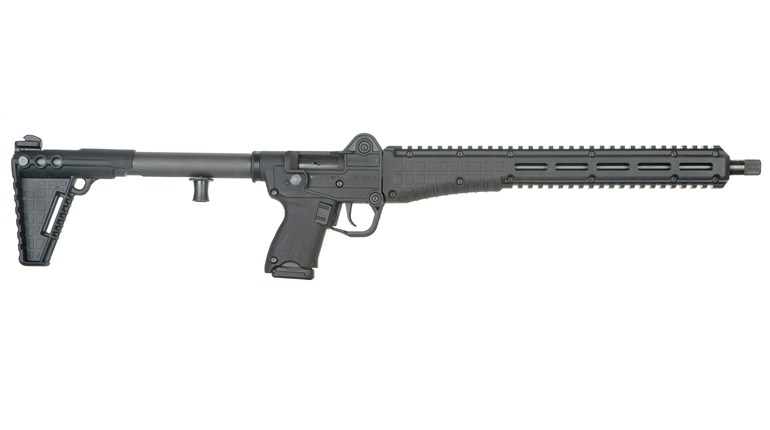
Norma’s new MHP load for the 9 mm offers an easy-shooting, reliable and consistent defensive option for the cartridge.
Those who have accepted the responsibility of their own safety and live with a defensive handgun on or near them at all times continue to search for better ammunition options. We’re always looking for that better mousetrap; a load that will increase the likelihood of a one-shot stop. When it comes to that science—the science of terminal ballistics—trying to design a better bullet is a lot like juggling cats. This is because there are so many variables an engineer must balance. For 2019, Norma Ammunition has a new take on the defensive-handgun bullet and it’s called the MHP (Monolithic Hollow Point).
For starters, let’s get the description out of the way. Monolithic means the bullet is made from a single material. In the case of the MHP, this material is copper. Hollowpoint refers to the configuration of the nose of the bullet. In the case of the MHP the nose is cavitated by about 1⁄16th of an inch, and around the cavitation the nose of the bullet has been skived or pre-stressed. The bullets are plated and have a silver (if not almost chrome) appearance. The cases have black-oxide coating, which does two things: First it gives the loaded cartridge a cool appearance, and second, it slickens the surface to aid reliability.
Currently the only cartridge for which Norma is offering MHP ammo is the 9 mm. The company sent me four boxes—80 rounds—to test, and I fired it through four different handguns with barrel lengths ranging from 3.1 to 5.0 inches. With each handgun I fired 10 rounds to get an idea about velocity consistency, and then fired three shots into a block of Clear Ballistics to get an idea about penetration and expansion.
With regard to velocity, the Norma MHP was quite consistent. Standard velocity deviations ranged from 5.1 fps to 15.7 fps for an average of 10 fps. Norma advertises a muzzle velocity of 1,312 fps, obtained with a 6-inch barrel. This explains why the velocities I obtained were a bit slower than advertised. However, velocity measurement is a fickle beast. Chronographs vary and so do guns. I’ve seen two identical guns record muzzle velocities of almost 100 fps difference with identical ammunition.
As far as reliability, there were no issues at all except with the 5-inch Wilson Combat 1911. This handgun failed to eject all 13 rounds fired through it. But, these failures to eject need to be qualified. That particular pistol has an aluminum frame and is set up with a heavy spring to work with +P ammunition. Keep in mind, with the 108-grain MHP bullet, not only is recoil reduced, but so too is the force exerted on the slide while cycling. For example, a 115-grain, 9 mm +P load can generate about 5 ft.-lbs. of recoil. The MHP load generates 30 percent less. Keep this in mind if you’re trying this ammunition. Get the right recoil spring for the job.
Even though reliability is the most-critical measure of any defensive-handgun load, terminal performance is what everyone keys on. When it comes to terminal performance, all we can do is make an educated guess based on testing and experience. By firing 12 rounds of Norma MHP into blocks of clear ballistics I feel a reasonable assumption can be made. Penetration ranged from 10.5 to 12 inches and expansion was quite consistent, averaging .90 inch. In case you are decimally challenged, for all practical purposes that’s 1 inch. But, understand that this expansion measurement was across the front of the bullet at its widest section, and unlike common lead-core bullets the MHP opens with four petals.
Does it matter this bullet has petals instead of a round frontal area? Not really. You see the standard twist rate for the 9 mm is 1:10 inches. That means for every 10 inches the bullet travels it will rotate one time. This applies in the barrel, in the air and inside test mediums, or bad guys. Translated to hillbilly, the bullet will cut a hole of about 1 inch in diameter for every 10 inches it travels. Ironically, 10 inches is about the penetration you can expect from this bullet. In testing, the average for 12 shots with four different barrel lengths was 11 inches.
Given the reduced recoil of this load, and the extreme expansion, this is promising. Of more concern to me was a video I uncovered on the internet showing these bullets not expanding when fired through denim. If they won’t, that’s a bad thing. So, I tested that, too. I found expansion only minimally reduced, but penetration was about the same. Bullets did tend to veer off course by about an inch, and that’s a product of the inconsistent frontal area and the fact that the denim probably caused one petal to start peeling back slightly sooner than the others.
Based on my limited experience with MHP ammunition, I think it has promise for personal protection. It’s accurate, delivers consistent velocities, produces low recoil, delivers decent penetration and creates a wide and nasty wound cavity. One of my favorite carry guns is a lightweight Browning Hi Power. This ammo seems perfect for that pistol because those guns will not handle a regular diet of the hot stuff. The MHP concept, however, is not as new and revolutionary as it might seem. Lehigh Defense has been building bullets like this for a long time. It seems smart ballisticians think alike.




































